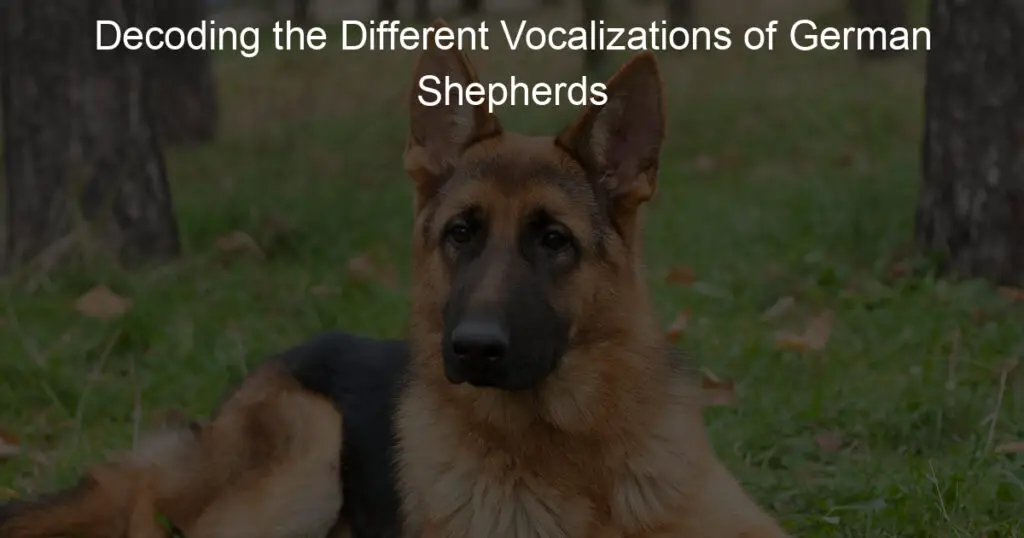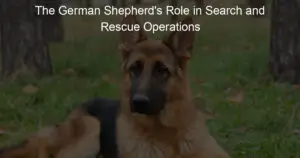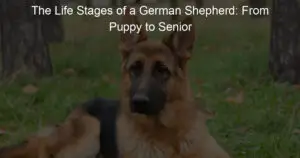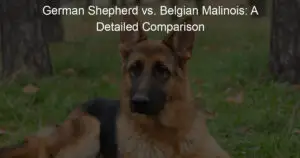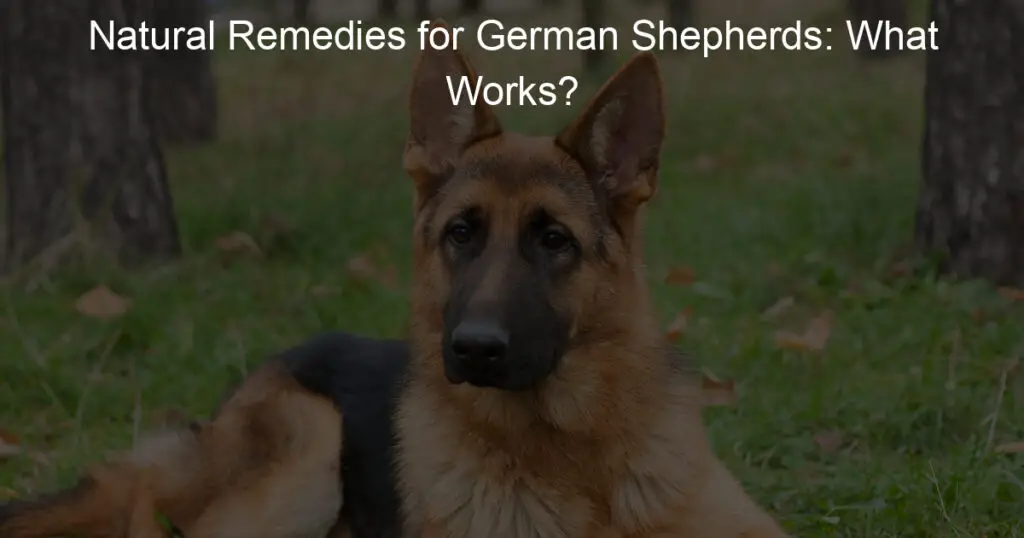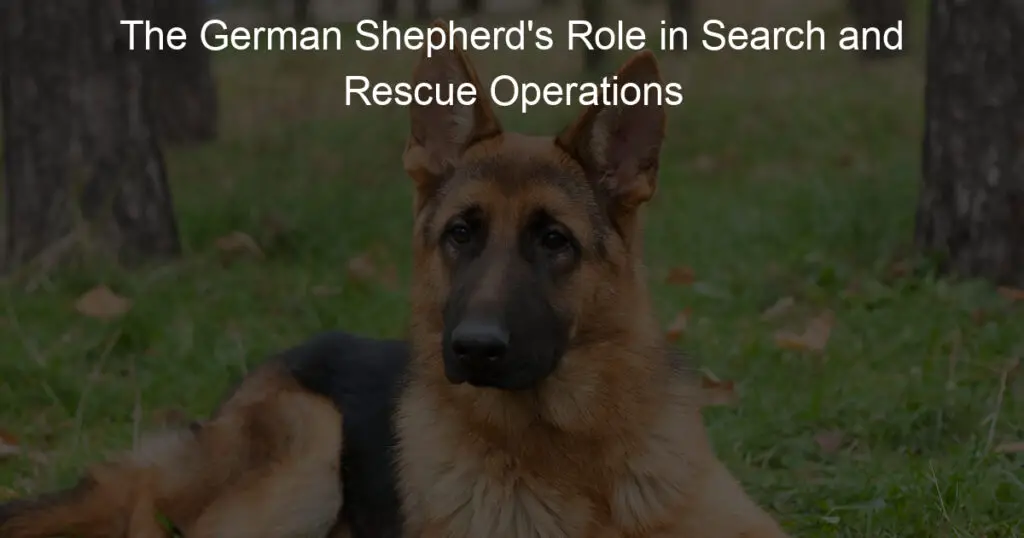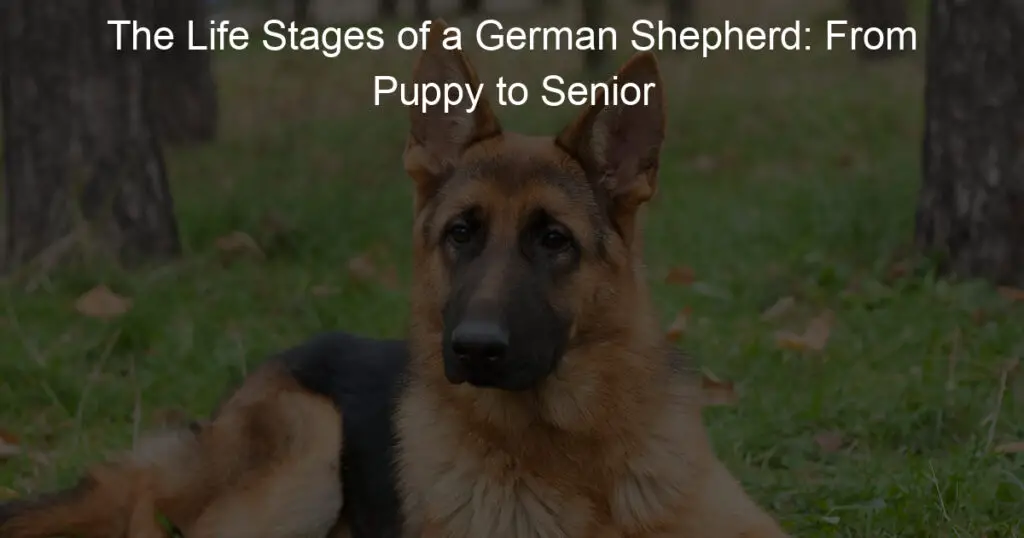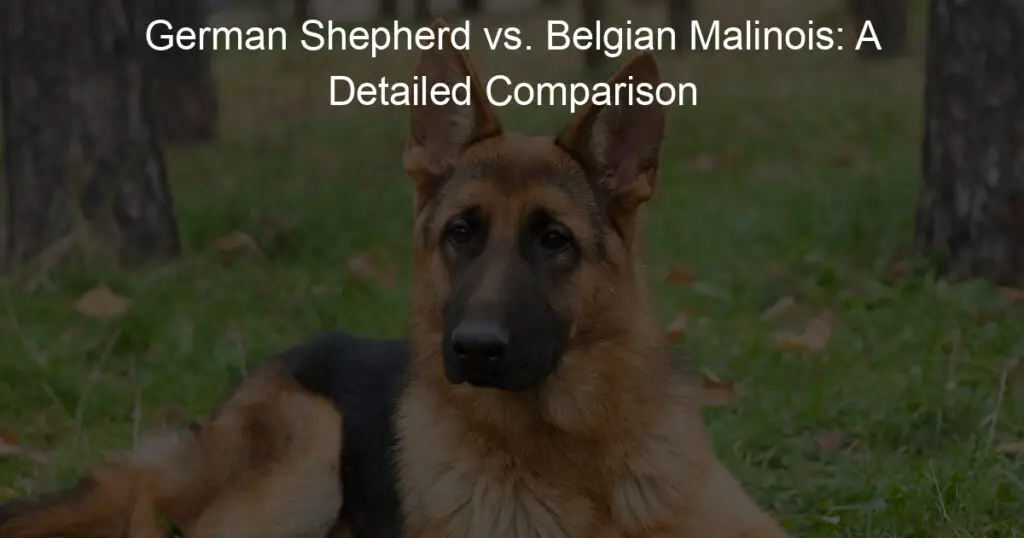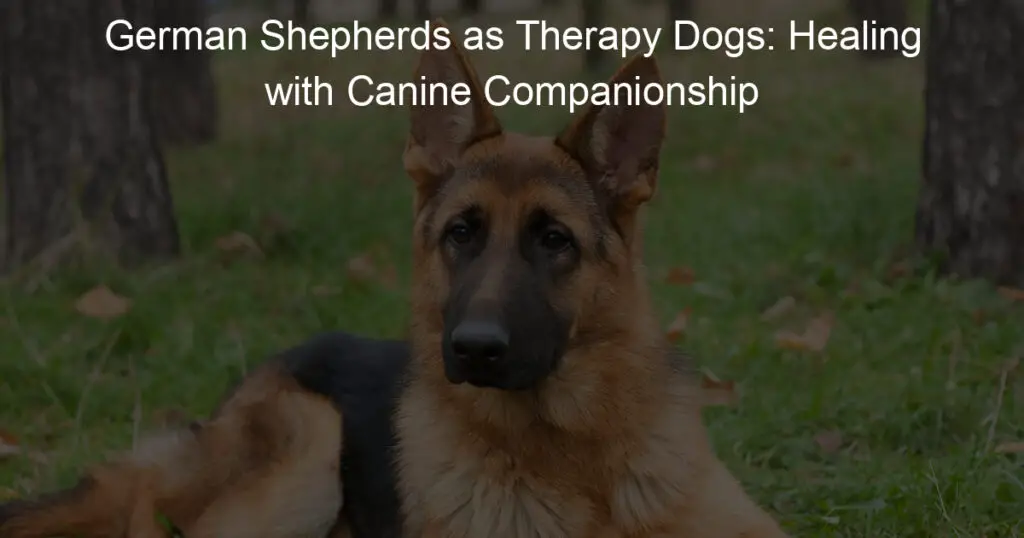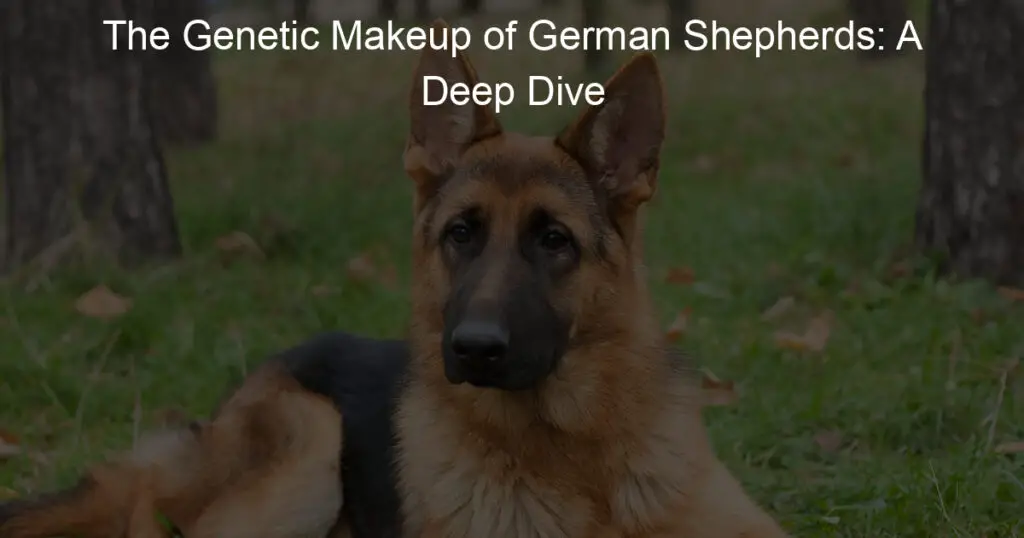This blog post seeks to demystify and elucidate the various vocalizations of German Shepherds, a breed known for their complex language of barks, whines, and howls. From warning barks to playful yips, we delve into the world of these intelligent canines, offering you a guide to better understand your furry friend.
Introduction to German Shepherd Vocalizations
German Shepherds are known for their intelligence, loyalty, and versatility. These remarkable dogs have a wide range of vocalizations that they use to communicate with their owners and other animals. Understanding these vocalizations is crucial for building a strong bond with your German Shepherd and ensuring their needs are met. From barks to whines, howls to growls, each vocalization carries a unique message. By decoding these sounds, you can gain insight into your dog's emotions, intentions, and even their health. It's important to remember that each dog is an individual, and their vocalizations may vary. However, there are some general patterns that can help you understand what your German Shepherd is trying to convey. Whether it's a protective bark, an excited yip, or a low growl, each sound has its own significance. By paying attention to your dog's vocalizations and body language, you can better understand their needs and respond accordingly. In this blog post, we will explore the different vocalizations of German Shepherds and what they mean. We will delve into the world of barks, whines, howls, and more, to help you become fluent in your German Shepherd's language. So, let's embark on this journey together and unravel the mysteries behind the vocalizations of German Shepherds.
The Protective Bark: What is your German Shepherd telling you?
German Shepherds are renowned for their protective nature, and one of the most common vocalizations they use to communicate their protective instincts is barking. It's important to understand that there are different types of barks, each with its own meaning.
- 1. Warning Bark:
When your German Shepherd lets out a sharp, loud bark, it is often a warning sign. This could indicate that they perceive a potential threat or danger in their surroundings. It's their way of alerting you to the presence of something or someone unfamiliar. Pay attention to your dog's body language during this bark, as they may also be standing tall, with their ears forward and their tail raised. - 2. Territory Bark:
German Shepherds are known for their strong territorial instincts. If your dog barks in a repetitive manner, with short intervals between each bark, it may indicate that they are protecting their territory. This could be their home, yard, or even their favorite spot in the park. They are essentially saying, "This is my space, and I will defend it." - 3. Alarm Bark:
Similar to the warning bark, the alarm bark is triggered by a sudden noise or unexpected event. It's a rapid and intense bark, often accompanied by a sense of urgency. Your German Shepherd is letting you know that something has caught their attention and they want you to be aware of it too. It could be a car door slamming, a knock on the door, or even an unusual sound coming from outside.
A Whine to Communicate: What's the underlying message?
Whining is another vocalization that German Shepherds use to communicate with their owners. While it can be an adorable sound, it's important to understand the underlying message behind the whine.
- 1. Attention-Seeking:
One common reason for a German Shepherd to whine is to get your attention. They may be feeling lonely, bored, or simply want some interaction with you. It's their way of saying, "Hey, I'm here and I need some love and attention!" - 2. Physical Discomfort:
Whining can also be a sign of physical discomfort. Your German Shepherd may be in pain, feeling unwell, or experiencing some form of discomfort. It's crucial to pay attention to their behavior and look for other signs of distress, such as limping or changes in appetite. - 3. Anxiety or Fear:
Just like humans, dogs can experience anxiety and fear. Whining can be a manifestation of their discomfort. This could be triggered by loud noises, unfamiliar surroundings, or separation anxiety. It's important to create a calm and secure environment for your German Shepherd to help alleviate their anxiety. - 4. Excitement:
Whining can also be a way for your German Shepherd to express excitement. This could be when you arrive home after being away for a while or when they anticipate going for a walk or playing with their favorite toy. It's their way of saying, "I can't contain my excitement!" - 5. Needing Something:
Sometimes, a whine can simply mean that your German Shepherd needs something. It could be that they are hungry, thirsty, or need to go outside for a bathroom break. Pay attention to their other behaviors, such as pacing or looking towards a specific area, to help determine their needs.
Howls and their Significance
Howling is a distinct vocalization that German Shepherds are known for. It is a long, mournful sound that can carry for long distances. While it may seem similar to a dog's bark, howling serves a different purpose and carries its own significance.
Firstly, howling is a form of communication among German Shepherds. They may howl to communicate their location to other dogs or to gather their pack. Howling can be a way for them to express their presence and establish a sense of unity and cohesion within their group.
Secondly, howling can be a response to certain stimuli. For example, if your German Shepherd hears a siren or other high-pitched sound, they may be triggered to howl in response. This behavior is deeply ingrained in their instincts, as their ancestors, such as wolves, used howling as a means of communication and coordination.
Furthermore, howling can also be an expression of loneliness or separation anxiety. If your German Shepherd feels alone or isolated, they may howl to seek comfort or to call for their pack members. It's important to note that excessive howling in these situations may indicate that your dog is experiencing distress and may require additional attention or support.
It's worth mentioning that while howling is a natural behavior for German Shepherds, it can vary from dog to dog. Some German Shepherds may howl more frequently, while others may rarely howl at all. It's important to understand and respect your individual dog's tendencies and preferences.
"A dog is the only thing on earth that loves you more than he loves himself." – Understanding the Love Bark
German Shepherds are known for their loyalty and deep affection towards their human companions. One way they express this love is through a unique vocalization known as the love bark. Understanding this particular vocalization can help strengthen the bond between you and your German Shepherd.
- 1. Characteristics of the Love Bark:
The love bark is distinct from other barks in its tone and rhythm. It is often softer, higher-pitched, and more repetitive compared to other barks. It may sound almost musical or sing-song-like. The love bark is usually accompanied by a wagging tail, bright eyes, and an overall excited and joyful body language. - 2. Expressing Happiness and Excitement:
The love bark is typically a response to feelings of happiness, excitement, and anticipation. When your German Shepherd is genuinely thrilled to see you or is anticipating something enjoyable, they may greet you with a series of love barks. It's their way of expressing their joy and eagerness to spend time with you. - 3. Seeking Attention and Affection:
Another purpose of the love bark is to seek attention and affection from you. German Shepherds are known for their strong desire to be close to their human companions. When they want your attention or crave physical contact, they may use the love bark as a way to communicate their needs. Responding positively to their love barks by giving them attention, petting, or engaging in playtime can reinforce their affectionate behavior.
Vocalizations in Puppies: Are they different?
When it comes to vocalizations, puppies, including German Shepherds, have their own unique set of sounds. These vocalizations can vary from those of adult dogs and serve different purposes as well. Understanding the vocalizations of puppies is essential for their overall well-being and effective communication.
- 1. Whining:
Puppies often use whining as a means to express their needs and emotions. It can indicate hunger, discomfort, loneliness, or a need to go outside for a bathroom break. Whining can also be a sign of anxiety or fear in puppies, especially when they are in unfamiliar situations. - 2. Yelping:
Puppies may yelp when they are startled, scared, or experiencing pain. It's their way of getting attention and seeking comfort. As they grow older and gain confidence, yelping usually decreases. - 3. Playful Barks:
Puppies have a unique way of barking during playtime. These barks are often higher-pitched and more frequent than those of adult dogs. Playful barks are a way for puppies to express excitement and engage with their littermates or human companions. - 4. Grumbles and Growls:
Puppies may also make grumbling or growling sounds during play. These vocalizations are not meant to be aggressive but are part of their play behavior. It helps them practice vocal communication and socialization skills. - 5. Whimpering:
When puppies feel anxious, scared, or in pain, they may whimper. Whimpering is a softer, higher-pitched sound compared to whining and is often accompanied by trembling or seeking comfort from their mother or human caregiver.
Deciphering Growls: Aggression or Play?
Growling is a vocalization that can often be misunderstood, especially when it comes to German Shepherds. It is crucial to decipher whether a growl indicates aggression or is just a part of play behavior. By paying close attention to the context, body language, and other accompanying signals, you can better understand the meaning behind your German Shepherd's growls.
- 1. Context Matters:
The first step in deciphering growls is to consider the context in which they occur. Is your German Shepherd growling during playtime, when interacting with other dogs, or when there is a perceived threat? Understanding the situation can give you valuable insights into the purpose behind the growl. - 2. Body Language:
Pay attention to your German Shepherd's body language when they growl. Aggressive growls are often accompanied by stiff body posture, raised hackles, a tense tail, and a direct, intense gaze. On the other hand, play growls are usually accompanied by loose, relaxed body language, a wagging tail, and a playful stance. - 3. Other Signals:
Look for other accompanying signals that can help you determine the intention behind the growl. Aggressive growls may be accompanied by snarling, bared teeth, and a defensive posture. Playful growls, on the other hand, may be accompanied by a relaxed facial expression, open mouth, and a playful bow.It is important not to punish your German Shepherd for growling, as it is a natural form of communication for dogs. Punishing them for growling may suppress their warning signals and potentially lead to more serious behavioral issues. Instead, focus on understanding the underlying cause of the growl and addressing any potential triggers or concerns.
The Variety of Yips: Excitement, Fear or Anxiety?
Yips are high-pitched, short bursts of sound that German Shepherds often make. These vocalizations can indicate a range of emotions, including excitement, fear, or anxiety. Understanding the different types of yips and their accompanying signals can help you better interpret your German Shepherd's state of mind.
- Excitement Yips:
– When your German Shepherd is excited, they may let out quick, high-pitched yips. This can happen when they see something they are eager to play with or when they anticipate something enjoyable, such as going for a walk or receiving a treat. - Fearful Yips:
– Fearful yips are often accompanied by body language that indicates your German Shepherd feels threatened or scared. They may cower, tuck their tail between their legs, and display other signs of fear. Fearful yips are meant to draw attention and signal distress, indicating that your German Shepherd is uncomfortable or scared. - Anxiety Yips:
– German Shepherds can also yip when they are experiencing anxiety. This can happen in situations that they find overwhelming or stressful. Signs of anxiety yips may include pacing, panting, trembling, and excessive salivation. These yips are an expression of their unease and may signal a need for reassurance and comfort.It is important to note that yips can vary in intensity and duration depending on the individual dog. Some German Shepherds may have more pronounced yips, while others may have softer, quieter ones. Additionally, the frequency of yips can also differ from one dog to another.
When your German Shepherd yips, it is essential to assess the context and accompanying body language to understand the underlying emotion. Providing a calm and supportive environment can help alleviate fear and anxiety. If your German Shepherd consistently displays fearful or anxious yips, it may be beneficial to consult with a professional dog trainer or behaviorist who can provide guidance and assistance in addressing these issues.
Beyond Barks: Non-Vocal Communication
While barks are the most common form of vocal communication, German Shepherds also rely on non-vocal cues to express themselves. Understanding these non-verbal signals can provide valuable insights into your dog's emotions and needs.
One of the key non-vocal communication methods is body language. German Shepherds use their bodies to convey a wide range of messages. For example, a relaxed and loose body posture indicates that your dog is calm and comfortable. On the other hand, a tense body with raised hackles and a stiff tail suggests that they may be feeling threatened or aggressive. Paying attention to your German Shepherd's body language can help you respond appropriately to their needs.
Another important non-vocal cue is facial expressions. German Shepherds have expressive faces that can communicate various emotions. For instance, a relaxed face with soft eyes and a slightly open mouth indicates contentment. Conversely, a wrinkled forehead, narrowed eyes, and bared teeth may signal fear or aggression. By observing your dog's facial expressions, you can better understand their emotional state and respond accordingly.
Additionally, tail wagging is a common form of non-vocal communication. While many people associate wagging tails with happiness, it's important to consider the context. A slow wag with a low carriage could indicate caution or uncertainty, while a fast wag with a high carriage typically signals excitement or joy. Understanding the nuances of tail wagging can help you gauge your German Shepherd's mood more accurately.
Other non-vocal cues include ear position, body postures, and even the speed of their movements. By paying attention to these subtle signals, you can become more attuned to your German Shepherd's needs and emotions, enhancing your bond and communication with them.
Do Different Breeds Have Different 'Languages'?
While all dogs share a common language of barks, growls, and other vocalizations, there is some evidence to suggest that different breeds may have their own unique ways of communicating. Just as different human cultures have their own languages and dialects, it is possible that different dog breeds have variations in their communication styles.
One reason for this is the fact that different breeds were developed for specific purposes and have distinct temperaments. For example, German Shepherds were originally bred as herding and working dogs, while breeds like Beagles were bred for hunting. These different purposes may have influenced the development of their communication styles.
Furthermore, physical characteristics and vocal anatomy can also play a role in the way different breeds communicate. For instance, brachycephalic breeds with shorter muzzles, such as Bulldogs, may have more difficulty producing certain vocalizations compared to breeds with longer muzzles. This could result in differences in their vocal repertoire and the ways they express themselves.
Additionally, some studies have suggested that certain breeds may have a higher propensity for specific vocalizations. For example, Siberian Huskies are known for their howling, while Shih Tzus are more prone to barking. These breed-specific tendencies could stem from genetic factors or the influence of selective breeding over generations.
How Can You Respond to Your German Shepherd's Vocalizations?
When your German Shepherd communicates through vocalizations, it's important to pay attention and respond appropriately to their needs. Here are some ways you can effectively respond to your German Shepherd's vocalizations:
- 1. Understanding the Context:
Before responding to your German Shepherd's vocalizations, it is crucial to understand the context in which they are occurring. Is your dog barking out of fear, excitement, or to alert you of something? By assessing the situation, you can better determine the appropriate response. - 2. Provide Reassurance and Comfort:
If your German Shepherd is whining or whimpering, it could be a sign of anxiety, fear, or discomfort. In such cases, it is important to provide reassurance and comfort to your dog. Approach them calmly, use a soothing voice, and offer physical contact or a safe space to help alleviate their distress. - 3. Addressing Excessive Barking:
German Shepherds, like many other breeds, may bark excessively at times. Excessive barking can be due to boredom, anxiety, or a need for attention. To address this, try to identify the underlying cause and address it accordingly. Providing mental and physical stimulation through activities, training, and play can help reduce excessive barking. - 4. Training and Positive Reinforcement:
Training your German Shepherd to understand specific cues and commands can greatly enhance communication between you and your dog. Teach them commands like "quiet" or "speak" to control their vocalizations. Rewarding desired behaviors with treats, praise, and play can reinforce positive communication and discourage excessive or unnecessary vocalizations. - 5. Seek Professional Help if Needed:
If your German Shepherd's vocalizations become excessive, persistent, or problematic, it may be beneficial to seek the guidance of a professional dog trainer or behaviorist. They can assess the underlying causes and provide you with specific strategies to address and modify your dog's vocalizations effectively.
Training Your German Shepherd: How to Encourage and Discourage Certain Sounds?
Training your German Shepherd to vocalize on command and discourage excessive or unwanted sounds can be a valuable skill. Here are some tips on how to encourage and discourage certain sounds in your German Shepherd:
- 1. Encouraging Desired Sounds:
To train your German Shepherd to vocalize on command, choose a specific word or cue that you want them to associate with the desired sound. For example, use the word "speak" or a hand signal when you want them to bark. When your dog naturally vocalizes, reward them with praise, treats, and positive reinforcement. Gradually introduce the cue while they are vocalizing and reward them when they respond accordingly. Consistency and patience are key in this training process. - 2. Discouraging Excessive Barking:
If your German Shepherd has a tendency to bark excessively, it is important to discourage this behavior. One approach is to use the "quiet" command. When your dog starts barking excessively, firmly say "quiet" and wait for them to stop barking. Once they are quiet, reward them with praise and treats. Consistently using this command can help your German Shepherd understand that excessive barking is not desired behavior. - 3. Redirecting Unwanted Sounds:
If your German Shepherd vocalizes in a way that you find undesirable, such as growling or whining excessively, it is important to redirect their attention to a more appropriate behavior. For example, if your dog growls at others during playtime, interrupt the behavior by redirecting their attention to a toy or a command like "sit" or "down." Reward them when they respond positively to the redirection.
The Silent German Shepherd: When Should You Be Concerned?
While German Shepherds are known for their vocal nature, it's important to pay attention if your German Shepherd becomes unusually quiet. A sudden change in vocalization patterns can indicate an underlying issue that needs attention. If your German Shepherd is typically vocal but suddenly becomes silent, it may be a cause for concern.
One possible reason for a silent German Shepherd is illness or physical discomfort. Dogs, like humans, may become quieter when they are not feeling well. If your German Shepherd is normally energetic and talkative but suddenly becomes withdrawn and silent, it's worth considering a visit to the veterinarian to rule out any health issues.
Another reason for a silent German Shepherd could be anxiety or fear. Some dogs may become silent when they are feeling stressed or anxious. This could be due to a change in their environment, a traumatic experience, or separation anxiety. If you notice your German Shepherd becoming unusually quiet in certain situations or when left alone, it is important to address their emotional well-being and seek professional help if needed.
Additionally, a silent German Shepherd may indicate a lack of confidence or socialization. Dogs that have not been properly socialized or have had negative experiences may become quiet and avoidant. This could be a sign that your German Shepherd needs additional training, socialization, and positive reinforcement to build their confidence.
However, it's important to note that not all quiet German Shepherds are a cause for concern. Some dogs naturally have a more reserved personality and may not be as vocal as others. As long as your German Shepherd is otherwise healthy, happy, and displaying normal behavior, their silence may simply be a part of their unique personality.
Vocalizations of German Shepherds:
| Vocalization | Sounds Like | Meaning | Examples |
|---|---|---|---|
| Warning Bark | A deep, loud bark | A warning to alert the pack | Stranger at the door, another dog in the area |
| Playful Yip | A high-pitched bark | A sign of excitement or joy | Playing with a toy, greeting a friend |
| Whine | A soft, extended vocalization | Indicates anxiety, fear, or distress | Separation from owner, unfamiliar situations |
| Growl | A low, guttural sound | A sign of aggression or dominance | Protecting a toy, defending territory |
Understanding your German Shepherd's vocalizations is a journey that deepens the bond between you and your pet. Their barks, whines, and howls are all part of a rich language meant for communication. By learning this language, you're not only enhancing your pet's well-being but also creating a friendship that speaks volumes.

